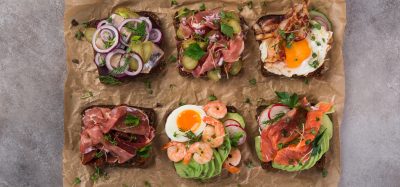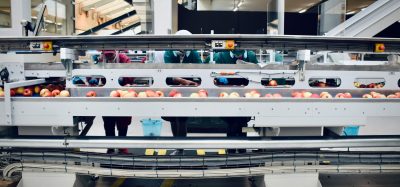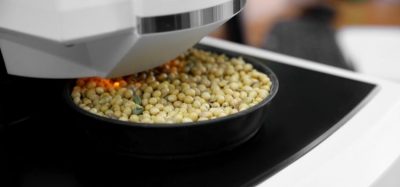Understanding microbial ecology essential for controlling microbial food spoilage
- Like
- Digg
- Del
- Tumblr
- VKontakte
- Buffer
- Love This
- Odnoklassniki
- Meneame
- Blogger
- Amazon
- Yahoo Mail
- Gmail
- AOL
- Newsvine
- HackerNews
- Evernote
- MySpace
- Mail.ru
- Viadeo
- Line
- Comments
- Yummly
- SMS
- Viber
- Telegram
- Subscribe
- Skype
- Facebook Messenger
- Kakao
- LiveJournal
- Yammer
- Edgar
- Fintel
- Mix
- Instapaper
- Copy Link
Posted: 3 December 2008 | Johanna Björkroth, Professor of Food Hygiene, Helsinki University | No comments yet
As a Professor of Food Hygiene, I have been teaching my students to understand the limitations associated with the determination of total aerobic bacterium levels when used for predicting food shelf life or as quality indicators. It is almost touching to notice how difficult it is to understand that the so-called ‘total bacteria’ actually consist of variable bacterial groups. It sounds so nice and simple to determine the total aerobic bacterial counts for estimating food quality.
As a Professor of Food Hygiene, I have been teaching my students to understand the limitations associated with the determination of total aerobic bacterium levels when used for predicting food shelf life or as quality indicators. It is almost touching to notice how difficult it is to understand that the so-called ‘total bacteria’ actually consist of variable bacterial groups. It sounds so nice and simple to determine the total aerobic bacterial counts for estimating food quality.
As a Professor of Food Hygiene, I have been teaching my students to understand the limitations associated with the determination of total aerobic bacterium levels when used for predicting food shelf life or as quality indicators. It is almost touching to notice how difficult it is to understand that the so-called ‘total bacteria’ actually consist of variable bacterial groups. It sounds so nice and simple to determine the total aerobic bacterial counts for estimating food quality.
However, in reality, this determination just superficially mirrors the complex bacterial populations in food at a certain point in time. The teacher must overcome confusion by introducing extrinsic and intrinsic factors as selective forces effecting on bacterial populations. The role of sensory evaluation carried out together with microbiology methods must be explained as well as a battery of specific microbiological or molecular methods. Even then, all this is not enough since students must understand how bacteria contaminate foods and what the autochthonous or indigenous bacteria of different foods are.
It is challenging to predict shelf life stability based on microbial analyses at the beginning of the shelf life. Psychrotrophic lactic acid bacteria (LAB) are specific spoilage organisms of cold stored nutrient-rich foods, such as meat, packaged under CO2-containing modified atmosphere (Borch et al, 1996; Korkeala and Björkroth, 1997)1,2. Shortly after packaging, LAB populations of the cooked meat products are usually below the routine detection limit (<10 CFU/g), even if the product later spoils quickly (Nerbrink and Borch, 1993)3.
In the case of raw meat products, only some of the bacteria present are able to grow under refrigerated storage and resist CO2. In the case of MAP poultry meat, it was shown that LAB population detected in the product two days after manufacture was not proportionally reflecting the species causing spoilage of the product after two weeks cold storage (Björkroth et al., 2005)4. In fresh products, the average CFU/g values were 1.3 × 103, 9.8 × 103 and 2.6 × 102 on de Man Rogosa Sharpe agar (MRS, for enumeration of LAB), Plate Count Agar (PCA) and Violet Red Bile Glucose agar (VRBG, for enumeration of Enterobacteriaceae), respectively. The corresponding CFU/g averages in the spoiled product were 1.4 × 109, 1.1 × 109 and 3.9 × 107 on MRS, PCA and VRBG agar, respectively. When the bacteria were identified to species level, enterococci (35.7 per cent of the LAB population) were prevailing in the fresh product whereas carnobacteria (59.7 per cent) dominated in the spoilage LAB population. Enterococcus faecalis was the main species detected in the initial population and Carnobacterium piscicola and Carnobacterium divergens were dominant within the spoilage LAB. In general, when the initial LAB population was compared to the spoilage LAB, a shift from homofermentative cocci towards carnobacteria, Lactobacillus sakei/curvatus and heterofermentative lactobacilli was observed.
Food spoilage is a complex issue. By specific spoilage organisms, we mean those bacteria which produce the sensory spoilage changes detected in the food (Gram et al., 2002)5. All bacteria present in the food at the time of spoilage are not necessarily associated with the sensory spoilage changes. In the example mentioned above, carnobacteria were the specific spoilage organisms and enterococci did not play a role in spoilage. Usually, the prevailing microbial group is responsible for spoilage but this is not necessarily the complete truth. Little is known about the interactions of microbes during the development of spoilage bacterial population. To understand this better, scientists are nowadays looking at quorum sensing mechanisms (signalling between bacteria), characterising inhibitory substances, such as the bacteriocines, applying mathematical predictive modelling and using variable culture-independent and dependent methods for the characterisation of microbiota. However, it is not a simple task to reveal how different bacteria compete with each other and how this is associated with the development of spoilage bacterial population.
In my research group, we have studied contamination and microbial ecology of packaged foods for the last 16 years. We have been concentrating mainly on the problems caused by psychrotrophic specific spoilage LAB because, in modern food manufacture, modified atmosphere packaging (MAP) and cold storage are commonly used to control the growth of aerobic Gram negative spoilage bacteria. In addition to LAB, we also currently study psychrotrophic Enterobacteriaceae. Both bacterial groups possess fermentative metabolism and may grow well in MAP foods, thus also spoil them. We have carried out research on food spoilage together with the Finnish meat industry. This has provided an interesting platform for basic research to meet applied research and quality control challenges for the manufacturers. For a short period of time, it may be difficult to understand what benefits are coming to the industry from long-term basic research. However, when the time period is extended, this becomes clearer and it is easy to encourage food industry to participate and finance basic research, such as microbial ecology studies.
It has been interesting to follow how some problems have arisen and on the other hand, been solved. In the 1980’s, we struggled with post-cooking contamination (Mäkelä and Korkeala, 1987)6 of sausages. Ropy slime-producing Lactobacillus sakei was causing problems in several meat products and throughout the Finnish meat sector. This problem was resolved by separating the slicing and packaging of cooked products from the handling of fermented sausages (Mäkelä, 1992)7. Nowadays, this is a common practice. The next psychrotrophic LAB we studied intensively was Leuconostoc carnosum, causing spoilage of cooked vacuum-packaged ham at the end of 1990’s. We identified this organism as a specific spoilage LAB of ham and also followed its contamination in the ham processing (Björkroth and Korkeala, 1997; Björkroth et al., 1998)8,9. We could show specific contamination sites in the production and thus aid in the development of better practices for the manufacturers of these products. The modern manufacturing lines, enabling good separation of raw materials and cooked products, have enabled the manufacturers to reach better shelf life stability than in the 1980’s. However, the need for future research did not vanish. Instead of cooked meat products, we are nowadays studying raw meats. New problems were detected along with the development of new type of products, such as marinated meats.
In the late 1990’s, we encountered rapid gaseous spoilage of a marinated MA packaged poultry product (Björkroth et al., 2000)10. The product was spoiled in less than a week. Even the expected shelf life was approximately two weeks. While characterising the microbiota in the spoiled product, we were surprised to find two novel lactic acid bacterium species with very different metabolic properties dominating the spoilage population. Leuconostoc gasicomitatum was described in 2000 (Björkroth, et al., 2000)10 and Lactobacillus oligofermentans in 2005 (Koort et al., 2005)11. L. gasicomitatum utilises many carbon sources effectively, whereas L. oligofermentas prefers xylose and arabionose to glucose. Both species associated with the population causing the rapid spoilage of the MA marinated poultry product.
In microbial ecology studies, understanding bacterial taxonomy and classification becomes relevant. We often think that bacterial taxonomy is a dry and old-fashioned research field. This is not the case at all when taxonomy is used to specify populations and thus classification is taken to ‘active everyday use’. Without proper nomenclature, we could not provide an international ‘coding system’ and shared language for the researchers. Since the description of L. gasicomitatum in 2000, we have associated this species with ubiquitous problems varying from greening of meat to slime and gas formation in vegetable and fish products.
Today, L. gasicomitatum is our model organism in food spoilage studies. We have sequenced its whole genome and are currently carrying out research on its spoilage potential and growth interactions with other bacteria. In addition, of course, we are continuing to carry out this research together with the meat industry. We have showed how this species is associated with different spoilage phenomena and studied the contamination of it and other psychrotrophic LAB at the meat processing environment (Vihavainen and Björkroth, 2007; Vihavainen et al. 2007)12,13. Now we can, after all the preliminary research on the occurrence of this species in various foods and environments, go to the molecular level to study the factors associated with the rapid growth and competence of this species under various circumstances.
Today, microbial ecologists have more tools available than ever before. The time of genomics and now metagenomics, enabling us to look at the function of the whole population, has provided excellent tools for researchers. The only shortcoming is, of course, the costs associated with these approaches. Because of the excellent experience we have had in our microbial ecology studies, I would like to encourage the food industry, courageously and without prejudice, to participate in financing basic research. For the long term, it provides sustainable solutions for problem solving.
References
- Borch, E., Kant-Muermans, M-L., Blixt, Y. 1996. Bacterial spoilage of meat and cured meat products. Int. J. Food Microbiol. 33, 103-120.
- Korkeala, H.J. and Björkroth, K.J. 1997. Microbiological spoilage and contamination of vacuum-packaged cooked sausages. J. Food Prot. 60, 724-731.
- Nerbrink, E. and Borch, E. 1993. Evaluation of bacterial contamination at separate processing stages in emulsion sausage production. Int. J. Food Microbiol. 20, 37-44.
- Björkroth, J., Ristiniemi, M., Vandamme, P. and Korkeala, H. 2005. Enterococcus species dominating in fresh modified-atmosphere-packaged marinated broiler legs are overgrown by Carnobacterium and Lactobacillus species during storage at 6ºC. Int. J. Food Microbiol. 97, 267-276.
- Gram, L., Ravn, L., Rasch, M., Bruhn, J.B., Christensen, A.B., Givskov, M. 2002. Food spoilage—interactions between food spoilage bacteria. Int. J. Food Microbiol. 78, 79-97.
- Mäkelä, P., and Korkeala, H. 1987. Lactobacillus contamina¬tion of cooked ring sausages at sausage processing plants. Int. J. Food Microbiol. 5, 323-330.
- Mäkelä, P. 1992. Fermented sausage as a contamination source of ropy slime-producing lactic acid bacteria. J. Food Prot. 55, 48-51.
- Björkroth, K.J. and Korkeala, H.J. 1997. Use of rRNA gene restriction patterns to evaluate lactic acid bacterium contamination of vacuum-packaged sliced cooked whole-meat product in a meat proces¬sing plant. Appl. Environ. Microbiol. 63, 448-453.
- Björkroth, K.J., Vandamme, P. and Korkeala, H.J. 1998. Identification and characterization of Leuconostoc carnosum associated with production and spoilage of vacuum-packaged sliced cooked ham. Appl. Environ. Microbiol. 64, 3313-3319.
- Björkroth, K.J., Geisen, R., Schillinger, U., Weiss, N., De Vos, P., Holzapfel, W.H., Korkeala, H.J. and Vandamme, P. 2000. Characterization of Leuconostoc gasicomitatum sp. nov. associated with spoiled raw tomato-marinated broiler meat strips packaged under modified atmosphere conditions. Appl. Environ. Microbiol. 66, 3764-3772.
- Koort, J.M.K., Murros, A., Coneye, T., Eerola, S, Vandamme, P., Sukura, A. and Björkroth, K.J. 2005. Lactobacillus oligofermentans sp. nov., associated with spoilage of modified-atmosphere-packaged poultry products. Appl. Environ. Microbiol. 71, 4400-4406.
- Vihavainen, E. & Björkroth, J. 2007. Spoilage of value-added, high-oxygen modified-atmosphere packaged raw, beef steaks by Leuconostoc gasicomitatum and Leuconostoc gelidum. Int. J. Food Microbiol. 119, 340-345.
- Vihavainen, E., Koort, J., Lundström, H.-S., Susiluoto, T., Auvinen, P., Paulin, L. & Björkroth, J. 2007. Role of broiler carcasses and processing plant air in contamination of modified-atmosphere-packaged broiler products with psychrotrophic lactic acid bacteria. Appl. Environ. Microbiol. 73, 1136-1145.









